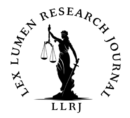Written by Aaryan Aggarwal,
Intern-Lex Lumen Research Journal,
June 2025
1.INTRODUCTION:
In today’s digitized era, technology is becoming an inextricable part of contemporary criminal investigation. From surveillance systems and digital forensics to predictive policing and artificial intelligence, the law enforcement landscape is in the middle of a revolution. All these developments promise increased efficiency, speed, and accuracy in the solving of crimes. But they also give rise to profound legal and ethical issues concerning privacy, due process, and the possibility of abuse. This blog delves into the dual nature of technology in criminal investigation, its legality, and ethical issues arising from it, particularly in the Indian context.
- TECHNOLOGICAL DEVICES USED IN CRIMINAL INVESTIGATION:
- Cyber and Digital Forensics
Computer forensics is a process of recovering and analyzing data from computer hardware and other electronic devices. It is used extensively in cybercrime, banking frauds, and even traditional crimes where digital traces are created. The law enforcement system in India heavily depends on products such as Cellebrite and EnCase for extraction and analysis of digital evidence.
- Surveillance and Tracking
Surveillance technology in the form of CCTV, facial recognition technology, and GPS tracking helps monitor and track suspects in real time. India’s expanding coverage of CCTV cameras across urban areas, particularly under the Safe City initiatives, has become a public security boon while also raising specters about mass surveillance.
- DNA Profiling and Biometrics
DNA fingerprinting helps in the identification of suspects and the clearing of innocent people. In India, the DNA Technology (Use and Application) Regulation Bill, 2019 is intended to oversee the use of DNA information, although privacy protection is still under discussion. The Aadhaar system also posed issues regarding misuse of biometrics in criminal repositories.
- Artificial Intelligence and Predictive Policing
AI systems are being tested for predicting crime patterns, hotspots, and law enforcement deployment priorities. Software such as Crime Mapping Analytics and Predictive System (CMAPS) has been implemented in Indian states. Algorithmic bias and a lack of transparency are, however, still major concerns.
- LEGAL ISSUES:
- 1. Admissibility of Electronic Evidence
Perhaps one of the key legal problems is whether or not evidence gathered by use of technology is admissible as evidence. The Bharatiya Sakshya Adhiniyam, 2023 (which amends the Indian Evidence Act, 1872) provides for electronic records under Sections 61 to 70. But integrity, authenticity, and chain of custody of the evidence continues to be a problem.
In Anvar P.V. v. P.K. Basheer (2014), the Supreme Court made it clear that electronic evidence needs to be issued with a certificate under Section 65B of the Evidence Act. This ruling was reaffirmed in Arjun Panditrao Khotkar v. Kailash Kushanrao Gorantyal (2020), where the Court stressed the importance of procedural compliance.
- Jurisdiction and Cross-Border Data Issues
Offences in the cyber world tend to cross geographical boundaries. For example, information stored on overseas servers can be vital to an Indian investigation. Yet, MLATs and the absence of international uniformity impede evidence gathering on time.
- Privacy and Surveillance Laws
The seminal decision in Justice K.S. Puttaswamy v. Union of India (2017) held the right to privacy to be a fundamental right under Article 21 of the Indian Constitution. The case has significant implications for surveillance practices. India, however, has no comprehensive data protection law—although the Digital Personal Data Protection Act, 2023 represents a start.
Lack of judicial review in the use of surveillance technologies such as facial recognition software is breeding grounds for abuse, especially against minority groups.
- ETHICAL CHALLENGES:
4.1.Threat of Mass Surveillance
Mass surveillance, though meant for public security, threatens to infringe on the freedom of individuals. The greater the use of facial recognition in public, without consent, the more similar it is to similar policies adopted by authoritarian states. In the absence of open protocols, such surveillance would be used for political or religious profiling.
4.2.Algorithmic Bias in Predictive Policing
AI systems can perpetuate systemic prejudice if the input data itself is biased. For instance, when predictive algorithms are trained on past crime records from poor areas, they will tend to disproportionately target such areas, resulting in over-policing and stigmatization.
4.3. Right Against Self-Incrimination
The Supreme Court in Selvi v. State of Karnataka (2010) has been held that procedures such as narco-analysis and brain mapping without consent offend Article 20(3) of the Constitution. The increasing employment of behavioral biometrics and voice recognition must be tested through this constitutional prism as well.
4.5.Consent and Informed Participation
Ethical application of technology requires that suspects, witnesses, and even the common public are given information on how their data is being gathered, stored, and utilized. In India, awareness is scarce, and data is usually gathered without real consent.
5.JUDICIAL AND LEGISLATIVE REACTIONS:
Indian courts have at times intervened to impart legal clarification. In Shreya Singhal v. Union of
India (2015), the Supreme Court invalidated Section 66A of the IT Act on grounds of chilling free speech. These interventions highlight the need for protection of constitutional rights in a technology-influenced legal ecosystem.
Legally, though the Information Technology Act, 2000 addresses cybercrime, it does not have provisions to address new technologies such as AI or deepfake evidence. The Criminal Procedure (Identification) Act, 2022, enabling collection of biometric and behavioral data from convicts and even arrested individuals, has been condemned as too sweeping.
6.INTERNATIONAL COMPARISONS:
Globally, countries have adopted different approaches to the intersection of technology and criminal law:
- European Union (EU): The General Data Protection Regulation (GDPR) provides strong safeguards for personal data, including in criminal investigations.
- United States: The Fourth Amendment protects against unreasonable searches and seizures, requiring warrants for electronic surveillance.
- United Kingdom: Courts in the UK have scrutinized the use of facial recognition by police forces, requiring it to be proportionate and justified.
India, while developing its own frameworks, can draw valuable lessons from these jurisdictions in crafting balanced legislation.
- CONCLUSION:
Technology has transformed criminal investigation, providing unprecedented solutions to crimes and crime prevention. Its unbridled application, though, can undermine constitutional principles and civil liberties. The legal system needs to evolve to include these tools while guaranteeing fairness, accountability, and justice. Judicial oversight, ethical and legal checks, and open governance are necessary to help ensure that the promise of technology in criminal investigation is not done at the expense of fundamental rights.
REFERENCE:
BOOKS:
- Avtar Singh, Principles of the Law of Evidence (25th ed. 2023).
- Karnika Seth, Computers, Internet and New Technology Laws (2d ed. 2022).
- Indira Carr & Richard Stone, Law of the Internet (5th ed. Oxford Univ. Press 2020).
- Pavan Duggal, Cyberlaw: The Indian Perspective (Saakshar Law Publ’ns 2021).
- Daniel J. Solove, Understanding Privacy (Harvard Univ. Press 2008).
Case Laws
- Selvi v. State of Karnataka, (2010) 7 S.C.C. 263 (India).
- Justice K.S. Puttaswamy (Retd.) v. Union of India, (2017) 10 S.C.C. 1 (India).
- Anvar P.V. v. P.K. Basheer, (2014) 10 S.C.C. 473 (India).
- Arjun Panditrao Khotkar v. Kailash Kushanrao Gorantyal, (2020) 7 S.C.C. 1 (India).
- Shreya Singhal v. Union of India, (2015) 5 S.C.C. 1 (India).
- Katheeeja v. State of Kerala, 2021 SCC OnLine Ker 267 (India).
- People’s Union for Civil Liberties v. Union of India, (1997) 1 S.C.C. 301 (India).
STATUTES AND LEGAL INSTRUMENTS
- Bharatiya Sakshya Adhiniyam, No. 46 of 2023 (India).
- Information Technology Act, No. 21 of 2000, § 66A (India) (repealed).
- Criminal Procedure (Identification) Act, No. 11 of 2022 (India).
- DNA Technology (Use and Application) Regulation Bill, Bill No. 88 of 2019 (India).
- Digital Personal Data Protection Act, No. 22 of 2023 (India).
- Regulation (EU) 2016/679 of the European Parliament and of the Council of 27 April 2016 (General Data Protection Regulation).
JOURNAL ARTICLES
- Usha Ramanathan, Surveillance and the Right to Privacy, 45(2) Econ. & Pol. Wkly. 10 (2017).
- Raian Karanjawala, AI and Predictive Policing: Boon or Bane?, 14(3) India L.J. (2022).
Web Sources
- Ministry of Home Affairs, Government of India, https://www.mha.gov.in.
- National Crime Records Bureau (NCRB), https://ncrb.gov.in.
- Internet Freedom Foundation, The Dangers of Facial Recognition in India, https://internetfreedom.in (last visited June 21, 2025).
- Press Information Bureau, Digital Personal Data Protection Bill, 2023 Passed, https://pib.gov.in (last visited June 21, 2025).
- Supreme Court of India, Judgments, https://main.sci.gov.in.


